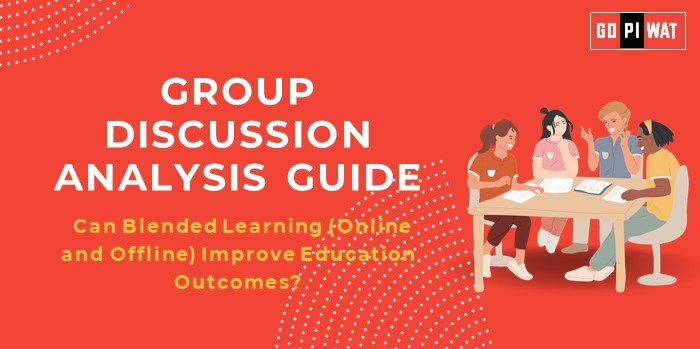📋 Group Discussion Analysis Guide: Can Blended Learning (Online and Offline) Improve Education Outcomes?
🌟 Introduction to Blended Learning
In a rapidly digitalizing world, blended learning—integrating online tools with traditional offline education—offers a promising avenue for enhancing educational outcomes. Emerging during the post-pandemic era, this model combines the flexibility of technology with the personalized attention of in-person teaching, applicable across schools, universities, and corporate training.
📊 Quick Facts and Key Statistics
- 💻 Global EdTech Market Size: Expected to reach $405 billion by 2024, reflecting rising demand for digital education tools.
- 🌐 Digital Infrastructure in India: Over 900 million internet users enable greater access to online learning.
- 📈 Retention Rates: Studies show blended learning can improve learning retention by up to 25% compared to traditional methods.
- 🏫 Post-Pandemic Trends: More than 70% of global institutions now incorporate blended learning into their education systems.
👥 Stakeholders and Their Roles
- 🏛️ Governments: Develop policies, fund digital infrastructure, and bridge the digital divide.
- 💼 EdTech Companies: Provide platforms, content, and tools to facilitate online components.
- 🎓 Educational Institutions: Adopt and implement blended teaching methodologies to enhance learning.
- 👪 Students and Parents: Engage actively and provide feedback to improve the blended learning model.
🏆 Achievements and Challenges
✅ Achievements
- 🌍 Accessibility: Enables education in remote and underserved regions.
- 🎯 Personalization: AI-driven platforms adapt to student needs, improving outcomes.
- 💰 Cost Efficiency: Reduces dependency on physical resources like textbooks and classrooms.
⚠️ Challenges
- 📶 Digital Divide: Lack of reliable internet in rural areas hinders equitable adoption.
- 👩🏫 Teacher Training: Teachers require upskilling to effectively integrate technology into lessons.
- 💡 Student Engagement: Online components may reduce interpersonal interactions and social skills development.
🌍 Global Comparisons
- 🇫🇮 Finland: Effectively integrates technology into classrooms, promoting interactive learning.
- 🇰🇷 South Korea: Utilizes advanced EdTech tools for personalized education tailored to student abilities.
Case Study: Kerala’s success during the pandemic highlights how strong digital literacy and infrastructure can enable blended education.
🗣️ Structured Arguments for Discussion
- 👍 Supporting Stance: “Blended learning enhances accessibility, personalization, and efficiency, making it a scalable solution for education.”
- 👎 Opposing Stance: “Over-reliance on digital tools may deepen inequality, especially in rural areas lacking access and infrastructure.”
- ⚖️ Balanced Perspective: “While blended learning offers immense potential, addressing challenges like the digital divide and teacher training is key to its success.”
💬 Effective Discussion Approaches
- 📊 Statistical Impact: “Studies show that blended learning can improve retention rates by 25%, offering a clear advantage over traditional methods.”
- ⚖️ Contrast Approach: “While digital tools provide accessibility, rural areas remain at risk of being further left behind due to the digital divide.”
- 🔎 Scenario-Based: “Imagine a classroom where students in remote villages learn alongside urban peers through a seamless blend of online and offline education.”
📈 Strategic Analysis of Strengths and Weaknesses
- ✅ Strengths: Personalization, scalability, cost-effectiveness.
- ⚠️ Weaknesses: Digital inequity, teacher adaptability, and lack of student interaction.
- 🚀 Opportunities: Integration of AI, virtual tools, and global collaboration can enhance blended learning models.
- 🔒 Threats: Cybersecurity concerns, data privacy risks, and uneven implementation.
🏛️ Connecting with B-School Applications
- 📌 Real-World Applications: Blended learning models can inform discussions on operational efficiency and workforce training in the EdTech sector.
- 🎯 Sample Interview Questions:
- “How can blended learning transform rural education outcomes?”
- “What policies can bridge the digital divide in blended education?”
- 💼 Insights for B-School Students: Understanding the scalability and inclusivity challenges of blended models offers valuable perspectives for policy analysis and educational consulting.


